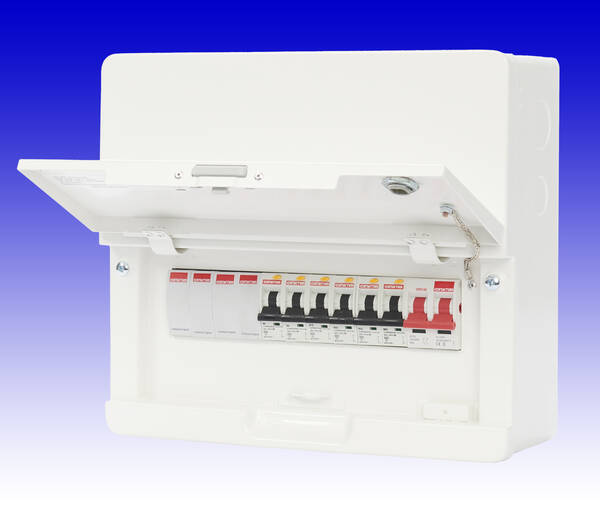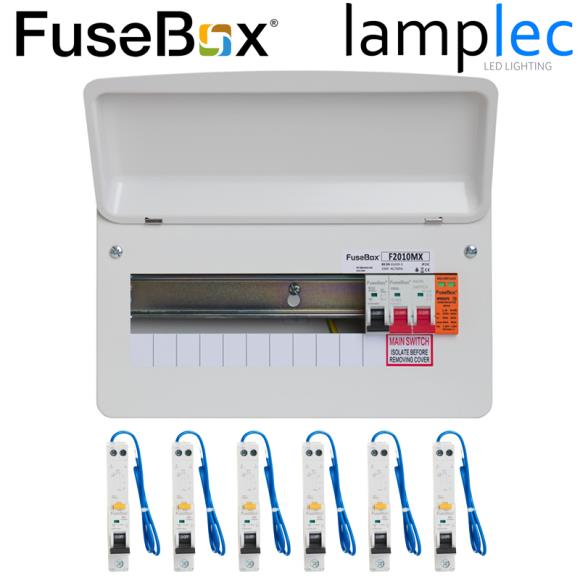The Duty of Consumer Devices in Effective Energy Monitoring Solution
Consumer devices are essential to reliable power monitoring systems, serving as the main distribution factors for electric power within frameworks. The advent of clever innovations has actually better boosted their capability, allowing for real-time information surveillance and nuanced power usage analysis.
Recognizing Customer Devices

Recognizing the duty of consumer devices begins with acknowledging their important function in safeguarding electrical systems. By separating mistakes within particular circuits, consumer devices stop extensive outages and possible fire dangers. This isolation is achieved via the use of circuit breakers that journey or integrates that impact when a fault is found, therefore removing the electrical flow to the affected circuit.
Moreover, consumer systems promote the orderly distribution of power, boosting the efficiency of power usage. They permit the organized management of electric tons, which can be particularly vital in industrial and commercial setups where demand can fluctuate considerably. Correctly maintained consumer devices add to the long life of electrical systems and assist in minimizing downtime brought on by electrical failings, eventually supporting the seamless operation of energy-dependent centers.
Smart Technologies Integration

An essential benefit of wise customer units is their capacity to take advantage of progressed algorithms and artificial intelligence for predictive analytics. This enables for preemptive changes based on use patterns, weather condition projections, and other variables, considerably boosting overall efficiency. Additionally, smart consumer units help with need feedback programs, where energy use can be dynamically readjusted throughout top durations to stabilize the grid and decrease costs.
The assimilation of renewable power sources, such as solar and wind, is likewise structured with smart customer systems. By smartly taking care of the intermittency of these resources, these devices guarantee a well balanced and reputable energy supply. Furthermore, smart consumer devices enhance customer involvement by offering thorough understandings and remote capabilities with mobile applications, cultivating an extra proactive strategy to energy conservation and sustainability.
Tracking Power Intake
Building on the capabilities of smart technologies integration, checking power intake ends up being a critical focus within power monitoring systems. By leveraging wikipedia reference advanced metering framework (AMI), real-time information on power usage can be gathered at granular levels, providing valuable understandings into usage patterns and peak need durations.
Smart meters and Net of Points (IoT) gadgets play a crucial role in this surveillance procedure. These gadgets can track power usage in real-time, sending information to central systems for evaluation.
The combination of these innovations not just equips consumers with comprehensive details concerning their energy usage yet also sustains utility providers in taking care of load circulation better. Eventually, constant and exact monitoring is indispensable for attaining energy efficiency, expense savings, and sustainability objectives within energy administration systems.
Optimizing Appliance Usage

One effective technique entails identifying top and off-peak hours to shift his response energy-intensive activities, such as laundry or dishwashing, to times when power need is reduced. This not only minimizes strain on the grid yet also maximizes lower power tolls. Furthermore, incorporating equipment discovering algorithms enables predictive upkeep, making sure home appliances operate at optimal performance and prolonging their life expectancy.
Power management systems can likewise incorporate user-specific preferences and behaviors to tailor device usage timetables. For instance, wise illumination systems can readjust brightness based on occupancy and all-natural light schedule, while heating and cooling systems can preserve convenience degrees without extreme energy use.
Promoting Sustainability
Promoting sustainability within energy administration systems entails not only improving performance yet likewise fostering environmentally liable practices. Customer units are indispensable to this procedure, as they give real-time data and control systems that enable customers to keep an eye on and reduce their power usage. By leveraging advanced modern technologies, consumer devices can recognize energy-saving opportunities and promote the assimilation of sustainable power resources like solar and wind power.
One critical aspect of promoting sustainability is educating customers on the benefits of accountable power use. Via special info in-depth insights offered by customer units, users can make educated decisions that lessen their carbon impact. These devices can recommend optimum times for operating high-energy appliances based on grid need and renewable power accessibility, therefore reducing dependence on fossil fuels.
Additionally, customer systems sustain the adoption of clever grid modern technologies, which boost the general efficiency and reliability of energy distribution. By allowing two-way communication in between consumers and energy suppliers, these systems can dynamically adapt to energy needs, lowering waste and advertising making use of sustainable energy methods.
Verdict
Consumer units, as essential elements of power monitoring systems, substantially boost electrical safety and effectiveness within structures with circuit security and smart innovation assimilation. In addition, the consolidation of sustainable energy resources advertises lasting techniques, adding to lowered general power consumption and lower carbon footprints.
Breakthroughs in clever technologies have changed the abilities of power monitoring systems, particularly via the integration of smart customer units.Structure on the capacities of smart technologies assimilation, monitoring energy intake ends up being an essential emphasis within power monitoring systems.Efficient home appliance use optimization is an essential component of energy management systems, aiming to boost effectiveness and lower unnecessary energy intake.Consumer units, as indispensable components of energy management systems, dramatically enhance electrical security and performance within buildings via circuit protection and wise modern technology combination. Furthermore, the consolidation of renewable energy sources advertises sustainable techniques, contributing to minimized total power consumption and lower carbon footprints.